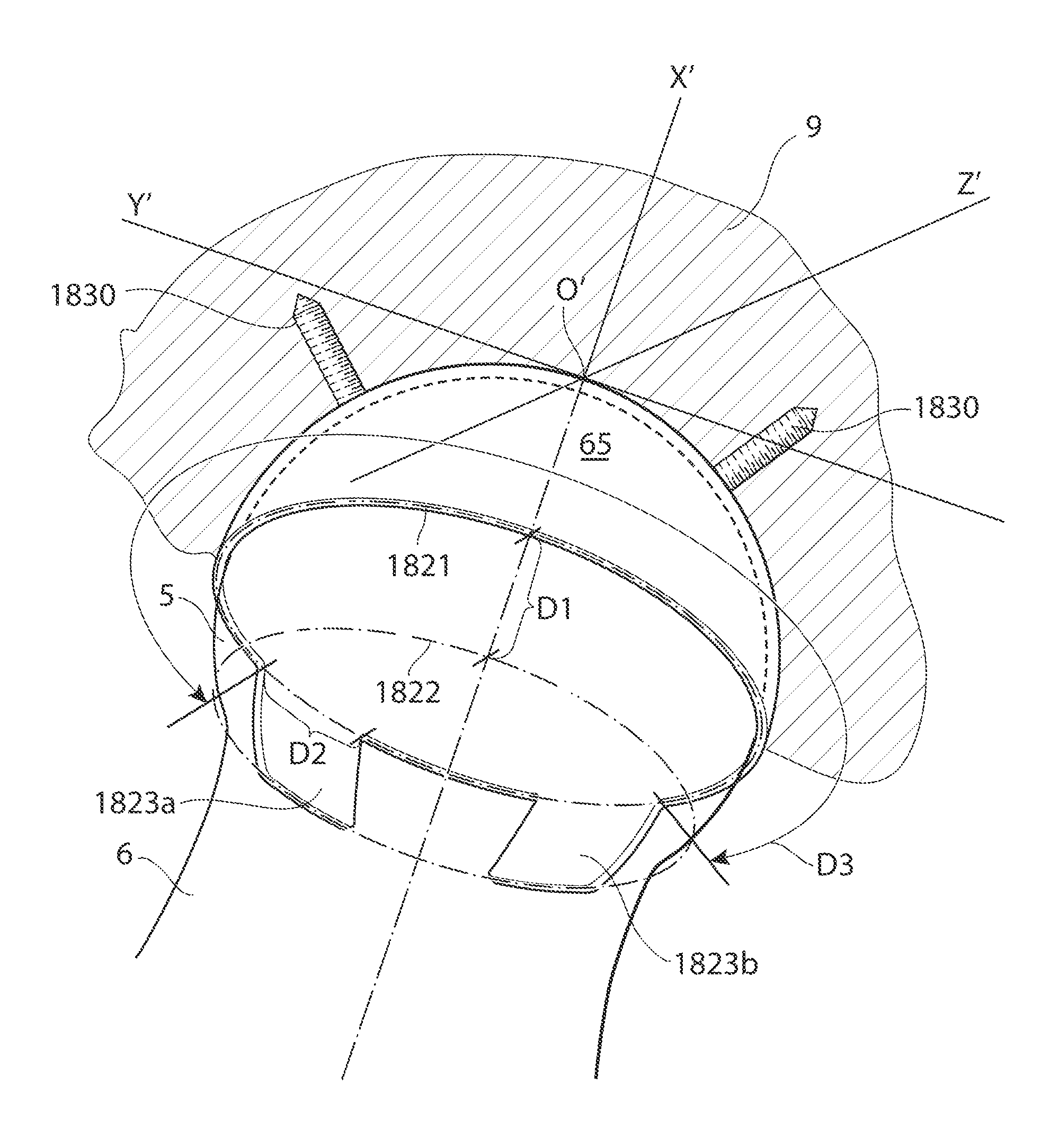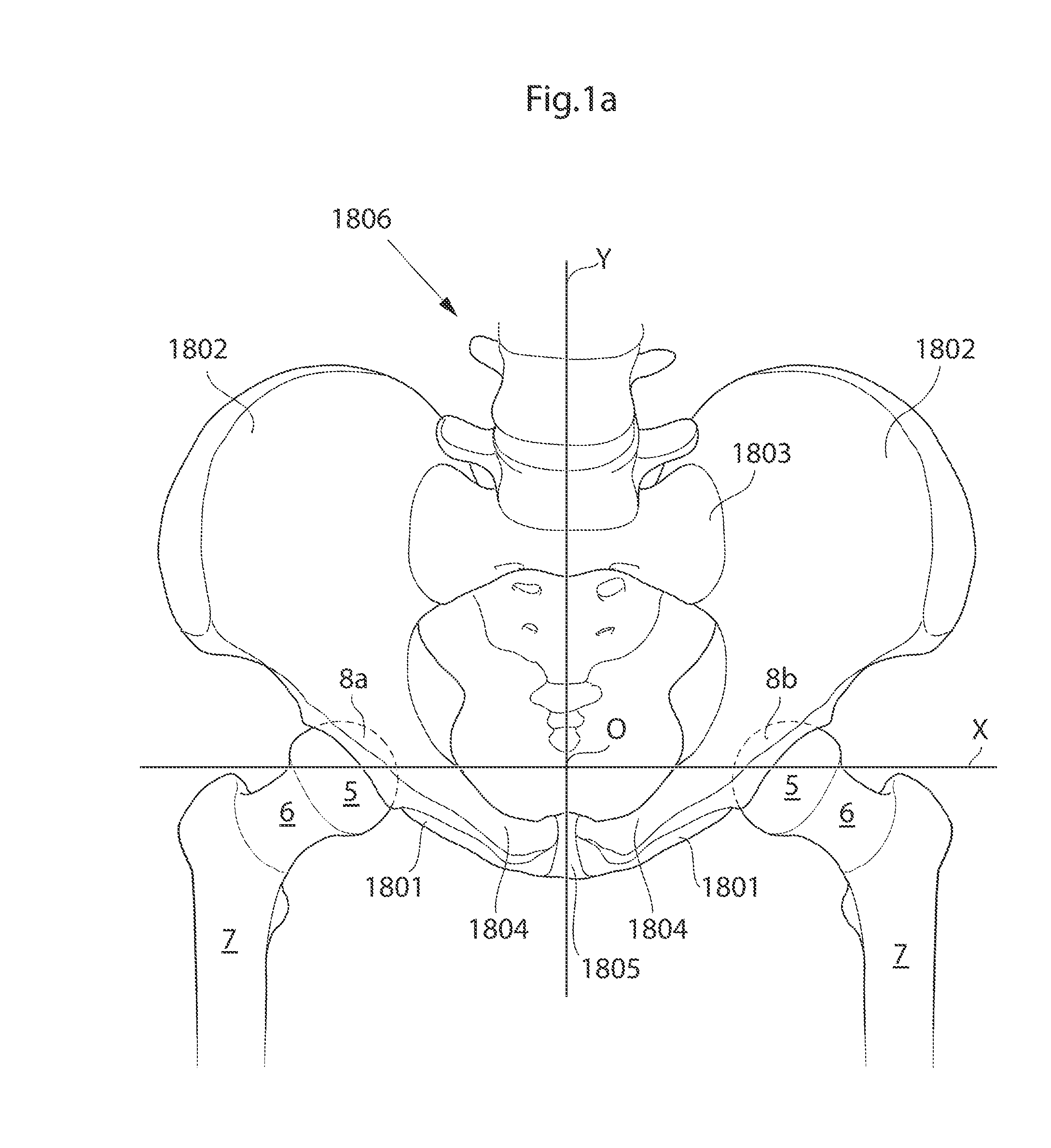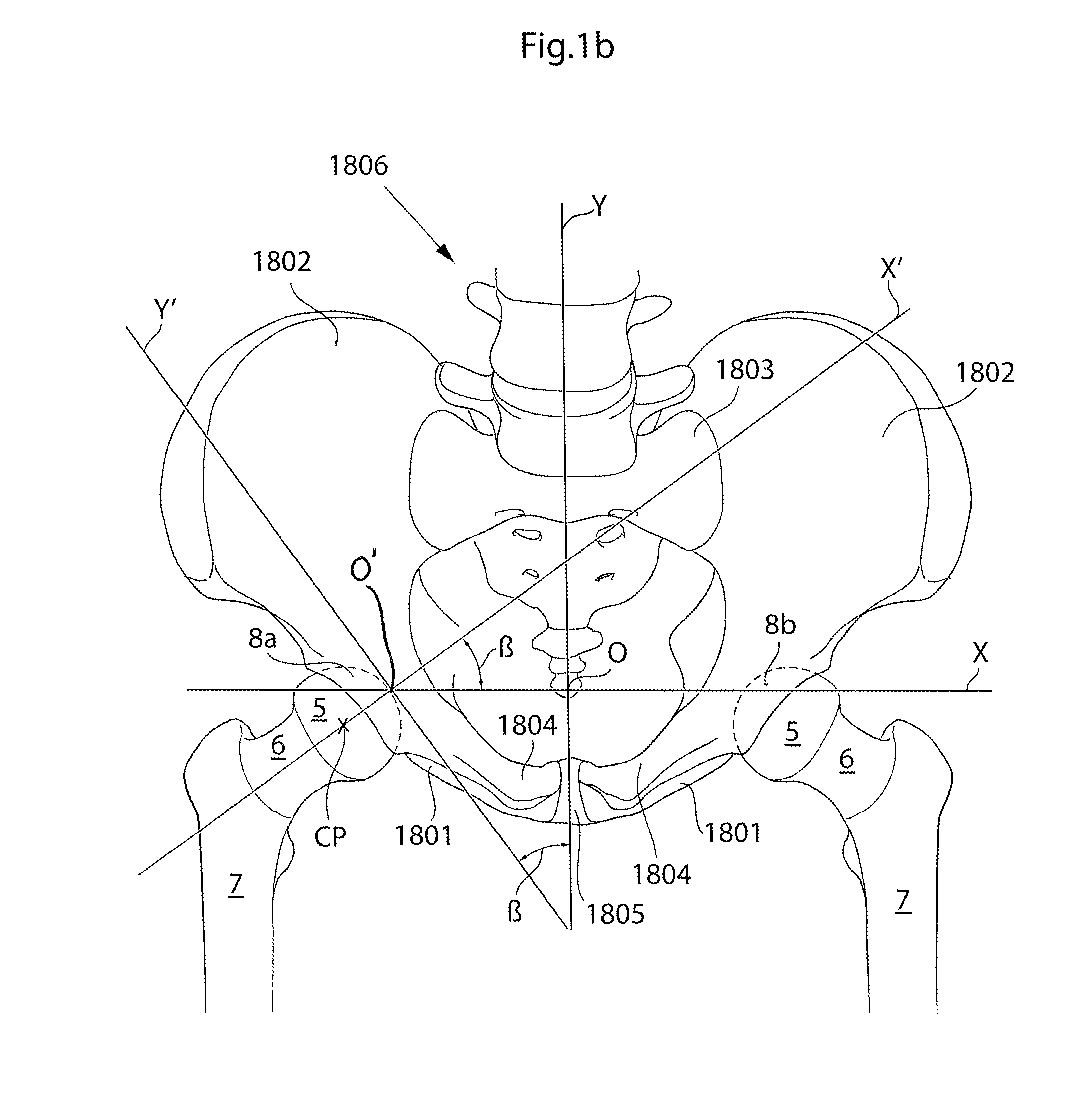Hip joint device
a hip joint and medical device technology, applied in the field of hip joint medical devices, can solve the problems of deteriorating joint function, decreased synovial fluid, and decreased effectiveness of articular cartilage as shock absorber, and achieve the effect of reducing the risk of hip joint dislocation
- Summary
- Abstract
- Description
- Claims
- Application Information
AI Technical Summary
Benefits of technology
Problems solved by technology
Method used
Image
Examples
Embodiment Construction
[0108]The hip joint is a synovial ball and socket joint which permits a large motion range for allowing a plurality of different movements of the lower limb. From a neutral position the following movements of the hip joint are normally possible: Lateral or external rotation, 30° with the hip extended, 50° with the hip flexed, medial or internal rotation 40°, extension or retroversion 20°, flexion or anteversion 140°, abduction 50° with hip extended, 80° with hip flexed, adduction 30° with hip extended, 20° with hip flexed.
[0109]When replacing the natural hip joint with a prosthetic hip joint, the depth of the prosthetic acetabulum will affect the motion range, the deeper the acetabulum bowl is made the more restrictive it is to the motion range. A deeper bowl has the advantage of reducing the risk of hip joint luxation, the risk of which is a major drawback with prosthetic hips of today.
[0110]The anatomy of the hip joint and its surroundings is further disclosed in: Marieb et al., H...
PUM
 Login to View More
Login to View More Abstract
Description
Claims
Application Information
 Login to View More
Login to View More - R&D
- Intellectual Property
- Life Sciences
- Materials
- Tech Scout
- Unparalleled Data Quality
- Higher Quality Content
- 60% Fewer Hallucinations
Browse by: Latest US Patents, China's latest patents, Technical Efficacy Thesaurus, Application Domain, Technology Topic, Popular Technical Reports.
© 2025 PatSnap. All rights reserved.Legal|Privacy policy|Modern Slavery Act Transparency Statement|Sitemap|About US| Contact US: help@patsnap.com



